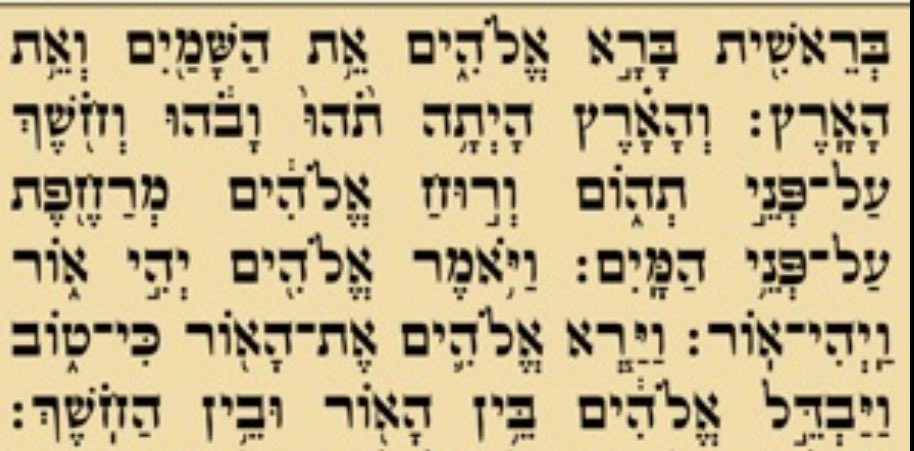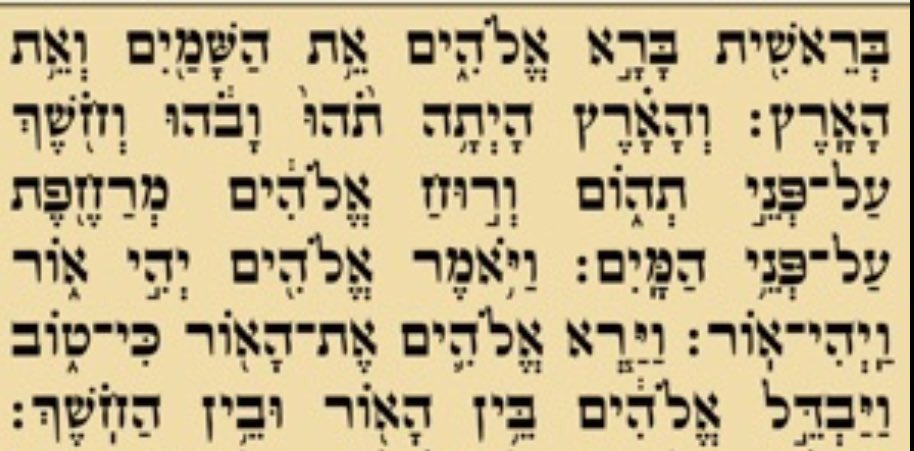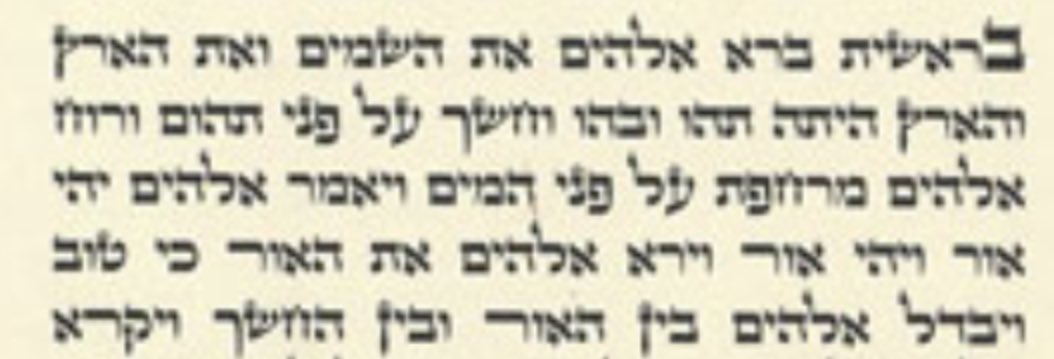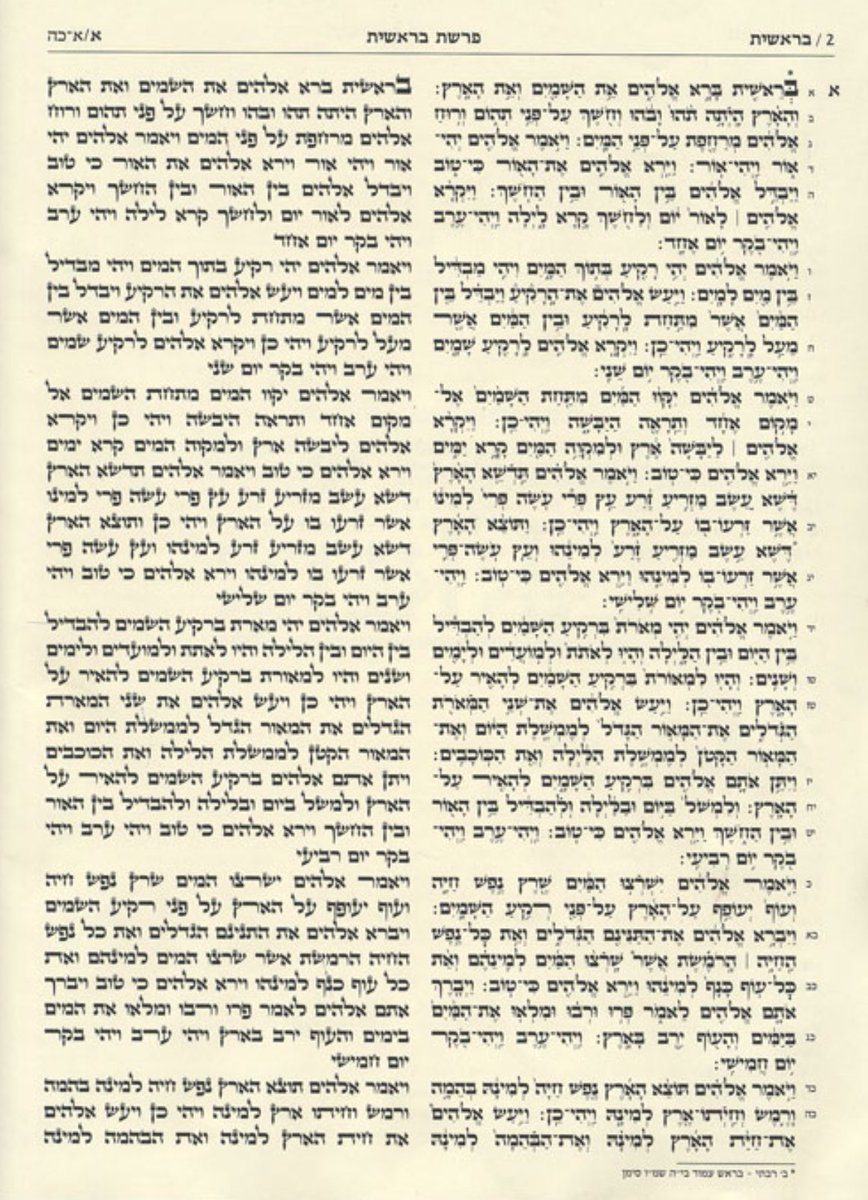It’s even hotter than it was last night...time for another late night thread on an aspect of Judaism - reading from the Torah.
And when I say “reading from the Torah”, I mean in a Synagogue, from a scroll, in front of the entire congregation.
(Sorry, couldn’t resist this GIF)
And when I say “reading from the Torah”, I mean in a Synagogue, from a scroll, in front of the entire congregation.
(Sorry, couldn’t resist this GIF)
2) This is the beginning of the Torah (the first book of Genesis), written in Hebrew. Some of dots and lines you see around the letters are the vowels. This is how it looks if you’re reading from a standard Chumash - book containing the 5 books of the Torah.
3) Now here’s where it gets interesting. Some of those dots and lines aren’t vowels at all. They’re music - they tell you what to sing when you say this word.
A lot to take in? Don’t worry, the next tweet will look simpler.
A lot to take in? Don’t worry, the next tweet will look simpler.
4) This is what the same verses in 2 look like written in an actual Torah scroll.
Spot the difference? No vowels. And no musical indicators.
So it looks simpler, but is actually much harder
Spot the difference? No vowels. And no musical indicators.
So it looks simpler, but is actually much harder
5) Imagine you had to read something in public in front of lots of people, but all the vowels were taken out of the thing you were reading and you had to sing each word in a specific way.
Congratulations! You’ve begun to understand what it means to read from the Torah.
Congratulations! You’ve begun to understand what it means to read from the Torah.
6) This is one of the things which young men (in Orthodox circles it’s only men) are expected to do when they reach age thirteen. If you’re Orthodox, chances are high you’ll be expected to read the whole Torah portion for that week (around 100 verses, give or take) like this.
7) It gets better. The musical indicators (I can’t really call them “notes” since they’re not in any given octaves) can be sung in quite a few different ways, depending on the tradition of Judaism you come from.
8) So someone reading this verse in a Synagogue which follows the Germanic tradition will sing it entirely differently from someone reading it in a Synagogue which follows the Yemenite tradition, to give just one example. There are LOTS of different ways to sing it.
9) This book is called a Tikkun Korim. It puts the two readings side-by-side - the one with vowels and musical indicators and the other as it appears on the Torah scroll. It’s an invaluable tool for a “Baal Koreh”, literally “Master of reading”.
10) Reading from the Torah is also called “leining” in Orthodox circles. It’s a word which comes from the Yiddish word “leyenen”, literally meaning “to read”.
In normal times, Orthodox Jews read from the Torah on the Sabbath, the festivals, fast days and every Monday & Thursday
In normal times, Orthodox Jews read from the Torah on the Sabbath, the festivals, fast days and every Monday & Thursday
11) Oh, and I forgot to mention, some of those have different tunes as well, ie. the tune for reading from the Torah on the Sabbath is different to the tune used on the Festivals.
Anyway, I hope you’ve found this thread informative. Good luck trying to sleep in 30 degree heat!
Anyway, I hope you’ve found this thread informative. Good luck trying to sleep in 30 degree heat!

 Read on Twitter
Read on Twitter





